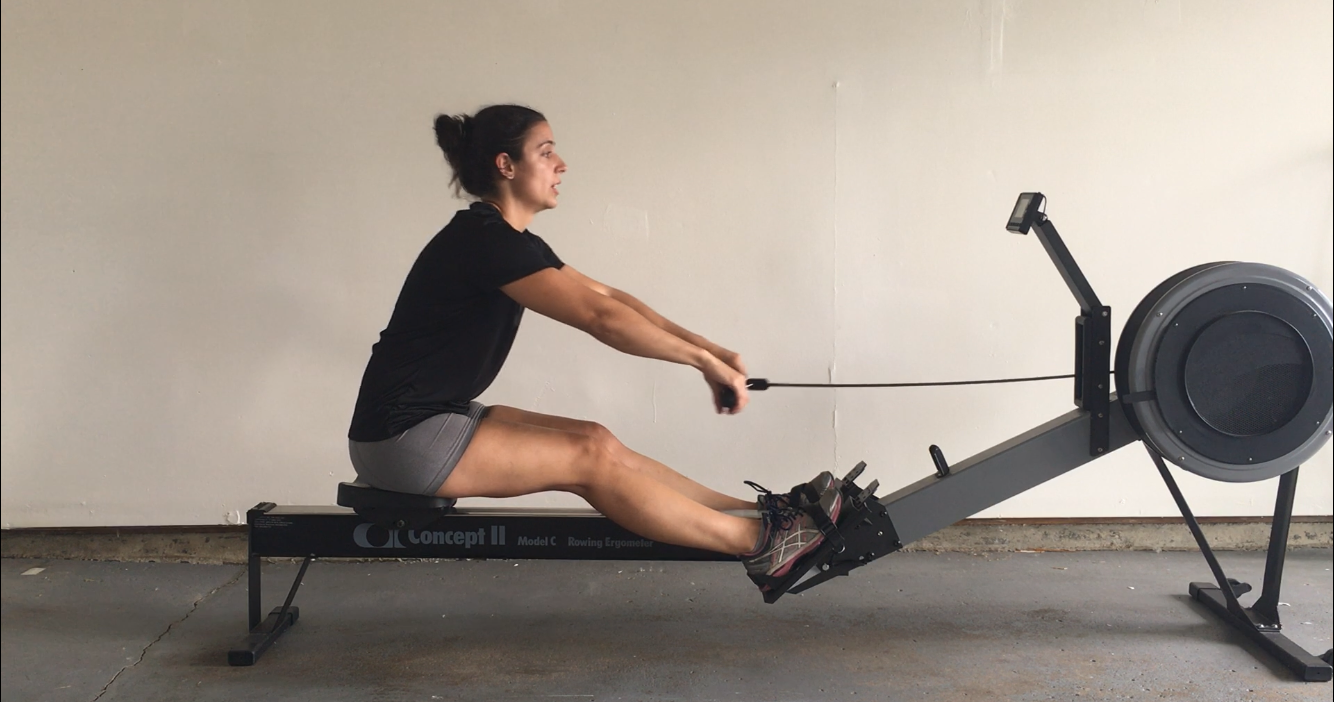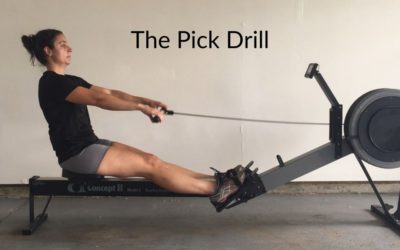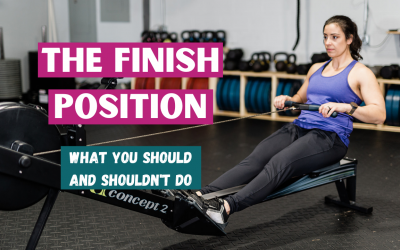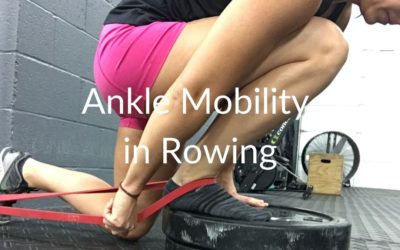3 Tips to Get Faster Splits at Low Stroke Rates
You may have heard the saying “row slow to row fast”. If you haven’t, its entirely true! You may already be confused, so let me explain. In order to be efficient on a rowing machine, it’s important to work on keeping less strokes per minute while still maintaining a good split.
How on earth do you do that? I have a couple of tips to help you out. First thing is you want to have good technique. There’s a lot that goes into having good technique, so in this post I’m focusing on two things you can work on. Then there’s what’s called ratio. More on that in a little bit. First, let’s get into those two technique tips.
LEGS FIRST ON THE DRIVE
One of the biggest things you can focus on when you’re looking to get more power is your leg drive. While learning rowing technique, it’s popular to say “leg, body, arms, arms, body legs” when talking about the rowing stroke. This is that first “legs” part. In that saying, we are looking for our legs to drive all the way down before our body swings open.
It’s easy to get in the habit of slightly leaning back at the start of your stroke. What this does is lift your heels high, and causes you to drive through the balls of your feet. We want to be driving through our heels. When we keep those shoulders in front of the hips during the leg drive, we are in a much better position to drive down through our heels.
Driving down through your heels will allow you to transfer much more power into the machine. This will give you faster splits, and works into having a good ratio (more to come on that).
HIT THE BODY OVER POSITION
The body over position in the rowing stroke is during the recovery. It’s when you’ve extended the arms and rocked the body forward, but your knees haven’t bent yet to come up the slide.

There’s a couple of reasons why this position is so important.
The biggest reason here is that it stops you from having to pull yourself up with your toes. Now you are able to float up the slide using your hamstrings to control the last part of your recovery. This allows you much more control on the way up. You’re able to go slow with the legs into the catch and turn around right into the next stroke.
If you’re slow with the arms and body swing but then rush with the legs in, there will be a lot more momentum to fight to turn around into your next stroke.
DRILLS TO DO
To practice driving through those heels with your legs, you can do some legs only rowing. This will be good practice to work on keeping those shoulders pitched forward while those legs drive down.
The reverse pick drill will help you with both technique points of driving with the legs first, as well as hitting that body over position.
The pause drill is another drill that’s good to practice hitting that body over position. You can pause at body over, and over the course of a couple of strokes you can make that pause shorter and shorter until there’s not a pause anymore.
WORK ON YOUR RATIO
Your ratio is the ratio of your drive time to your recovery time. If your ratio is 1:1, then the drive is the same length of time as your recovery. If your ratio is 1:2, then your recovery is twice as long as your drive.
In order to get better splits you need to drive harder, but in order to get to lower stroke rates you need to take your time on the recovery. This is best shown to you in a mini demo. Check it out:
So what happened here?
When I was going back and forth at a 1:1 ratio, not much power was getting into the machine. When I made the switch to a hard drive and extra slow recovery, my ratio went somewhere between a 1:2 to 1:3. My split went way down, and my stroke rate went even lower.
The only part of the stroke that affects the split is the drive. The more that goes into the drive, the faster split the machine will show. So if there’s any excess energy used during the recovery to pull oneself up to rush, that energy is wasted.
This is why I focused on the leg drive and hitting the body over position. Having a good leg drive will put more power into the stroke, while hitting body over will help you relax and take your time on the way up.
PRACTICE, PRACTICE, PRACTICE
Learning to drive with the legs, hit body over, and have good ratio will come with time and practice.
There’s going to be a give and take with the ratio of your stroke. You could have the hardest drive there is at 16 strokes per minute, but you won’t be able to hold that for very long. You still want to manage your intensity for the kind of piece you’re doing.
So a longer steady state piece won’t have as hard of a drive, but will have a much longer recovery at a lower stroke rate. If you are at a slightly higher rate for interval pieces, the amount of effort going into your drive will be more since the pieces are shorter and you can maintain that higher intensity.
If you’re wanting to change your stroke rate during a piece this is how you want to do it. If you need to go to down in stroke rate, focus on a longer recovery. If you need to go up in stroke rate, focus on a harder drive. As stroke rate increases, the recovery time will also get faster but still take more time than the drive.
Getting more power at lower stroke rates will also come with increased strength and cardio capacity as you row more. This comes with time, and you can’t rush this. These things will also go into being able to hold a faster split for longer at a similar stroke rate.
If you’re wanting some more info on how you can use stroke rate to help you, check out my other blog post about ways you can use stroke rate to help you.
The Pick Drill
New to rowing? Need a technique overhaul? I highly suggest starting with the pick drill. The pick drill is useful in a lot of different ways. For beginners, it’s a great way to learn the stroke. You’re not worried about power, just correct movement. For more advanced...
Do’s and Don’ts of the Rowing Finish Position
Today, I'm going to be talking about the finish position. That's going to be the back part of your stroke, where you finish your drive. I'm going to talk about what you want to be doing, and what you want to be on the lookout for when critiquing your own rowing...
Ankle Mobility in Rowing
Most people may think you don’t need much mobility in order to row. They may be correct, but you do need plenty of mobility to row WELL. One area that I want to focus on is ankle mobility. I want to explain why this is important, and some exercises you can do before...



